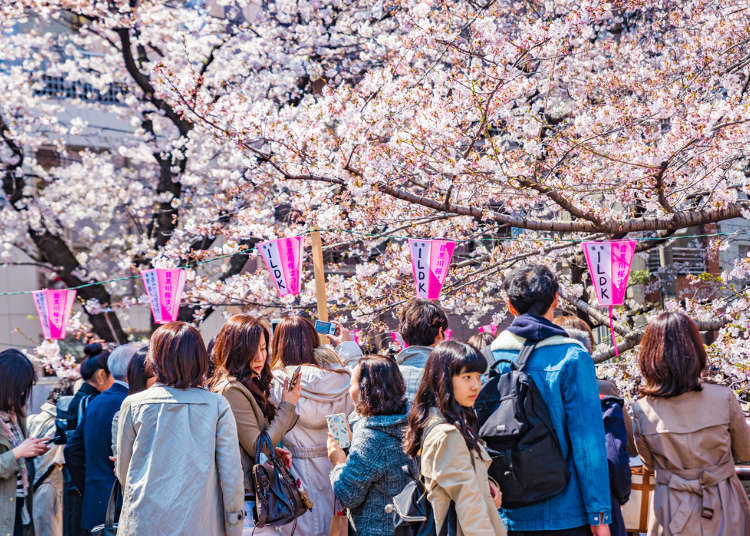
Japan’s cherry blossoms aren’t just pretty flowers blossoming for a very short time. For centuries, a rich and deep culture developed surrounding the fleeting sakura. Innumerable poems and songs are dedicated to the cherry blossom. Indeed, the word “sakura” itself is found in the most curious of words and sentences, seemingly used completely out of season. For example, people drink a cherry blossom tea called “sakurayu” on special occasions, and if you as a Japanese high school student how their exam went, they may reply with “sakura saku,” literally meaning “the Japanese cherry blossoms,” but actually saying that they passed the exam successfully. Generally, people associate the flowers with new beginnings, as it is one of the most vivid expressions of changing seasons. Spring is a time of reflection and deep thought for many.
What is the meaning and significance of Japanese cherry blossoms?
Around February each year, shops all around Japan stock their shelves with sakura-themed items, snacks, and dishes. This is way before the first flowers open, mind you, but the mood is set well in advance. Every year, this cherry blossom market grows larger and the range of products and food centered on the flowers increase. Especially dessert creations and sweets are plentifully available during March and April when Japan actually experiences the beautiful cherry blossom.
But why is Japan so fascinated with the sakura phenomenon since centuries ago? Cherry blossom trees have many meanings to the Japanese. A lot has to do with the very brief life of the flowers, blooming only for about a week to ten days. Their fleeting beauty illustrates all too perfectly that nothing in this world is permanent, everything passes away at some point. A sad but beautiful admiration for this impermanence has been an important part of the Japanese mindset since ancient times. In Japanese, it’s called “mono no aware.” This mindset can be found in the smallest things of Japanese daily life – let’s take a closer look and do a little cherry blossom Q&A!
Q1 – Do Japanese Cherry Blossoms Have a Scent?
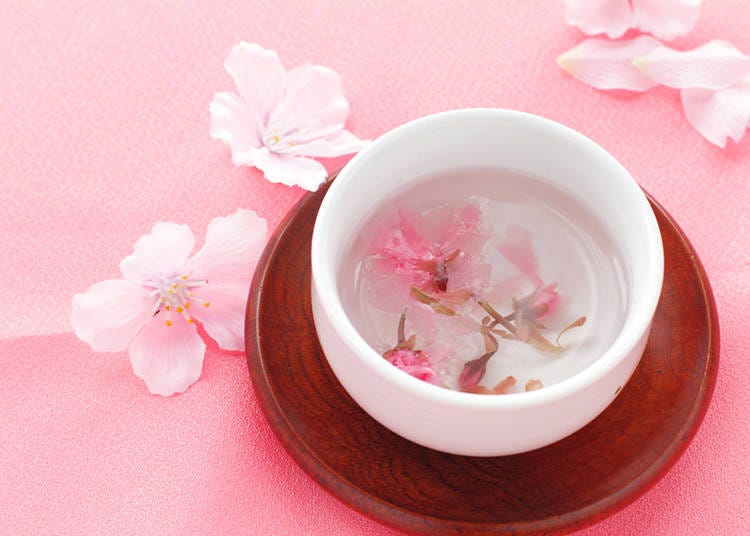
In early spring, you’ll see cherry blossom-flavored drinks, sweets, and snacks all over Japan’s shops and department stores—but do Japanese cherry blossoms even have a smell?
Generally speaking, the scent of sakura is subtle and delicate, including the flowers of Somei Yoshino, the variety that makes up 80% of Japan’s cherry blossom trees. Even if you hold a flower right under your nose, there will only be the tiniest hint of a scent. Most people recognize the scent and taste of cherry blossoms as their salted leaves and petals, or the aromatic traditional sweet called sakuramochi.
For salted cherry blossoms—a recipe that has been around for centuries—people generally use “double cherry blossoms” of the Fugenzo or Kanzan varieties and pickle them with salt or plum vinegar. The leaves of sakura trees are pickled in the same way, coming from the Oshima cherry variety. This pickling brings out the plants’ coumarin, a fragrant organic chemical that gives the cherry blossoms a wonderful aroma. For a genuine whiff of the cherry blossom scent, pour hot water over the flower. The rising steam carries an elegant and sweet aroma, which is the natural scent of sakura.
Q2 – Are Cherry Blossoms Edible?
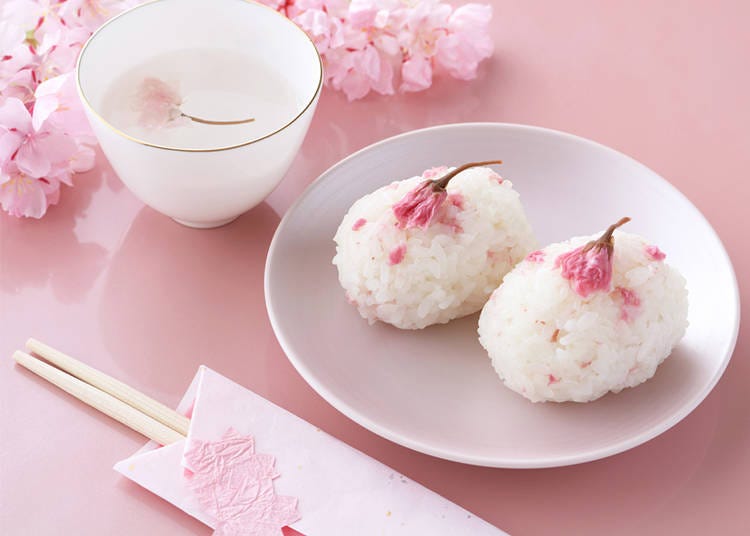
By pickling both the leaves of Japanese cherry trees and the flowers, they’re left intact. Especially the flowers boast a beautiful, vivid pink color and are used as toppings for tea called sakurayu, sakura anpan (bean paste-filled sweet rolls), or sakura onigiri (rice balls).
The most famous dish made with these pickled leaves and flowers the sakuramochi. The rice cake is wrapped in the leaf, while the flower is often—but not always—used as a topping.
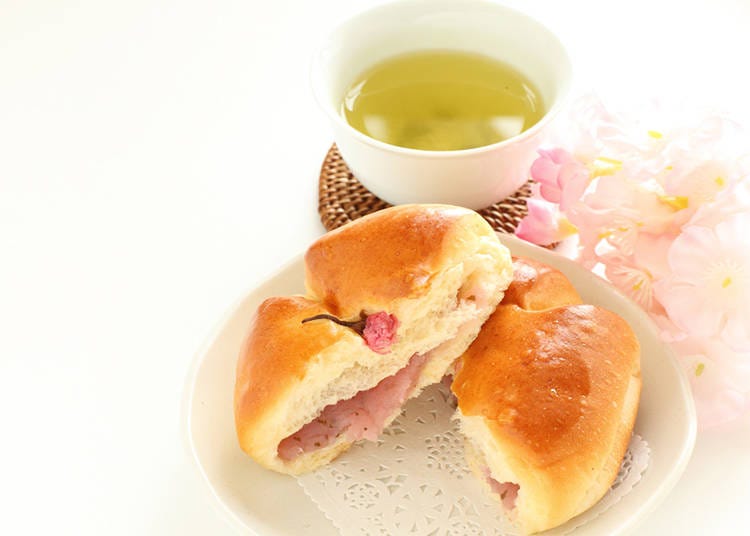
Sakurayu is a cherry blossom tea in which hot water is poured over the pickled flower. This tea is somewhat of a lucky charm and often served at weddings or engagements instead of the usual green tea. Regardless of the season, it is commonly enjoyed for celebratory occasions.
Sakura anpan is a spring-tastic twist on the regular sweet roll with bean paste. One of the most famous shops when it comes to sakura anpan is Ginza Kimuraya. After presenting a bread specialty called sakadane anpan sakura to Emperor Meiji, it became a craze all around Japan. The sweet, flavorful bean paste is the heart of this snack, embraced by fluffy bread and topped with a salted cherry blossom that provides a hint of salt.
Sakuramochi can be enjoyed in two different ways. A lot of people eat it as it is, with the pickled leaf wrapped around the rice cake, while others wait until the fragrance of the leaf has soaked the rice cake and then eat them separately from each other.
Q3 – What’s the Difference Between Sakuramochi from Kansai and Kanto?
Sakuramochi is a seasonal word to express spring. It also is a sweet to celebrate the Doll’s Festival (Hinamatsuri) on March 3 and one of Japan’s most beloved spring desserts. However, if you did an image search of “sakuramochi,” you’ll come across at least two kinds that look rather different from each other. This is because the shape of the sakuramochi differs by region.
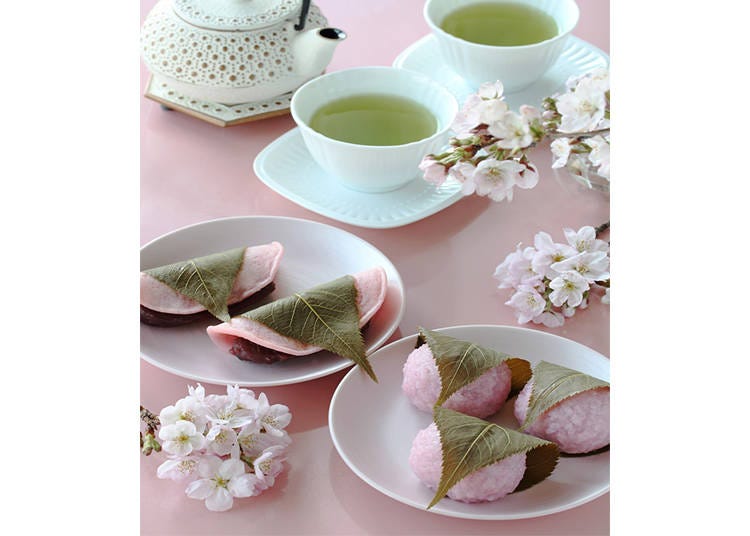
The sakuramochi of the Kanto region, meaning around Tokyo, is called “chomeiji” and is shaped a bit like a crêpe, with sweet bean paste wrapped in a bread-like baked dough. It is named after the temple where Tokyo’s own sakuramochi were first sold. Its creator collected the leaves from the banks of the nearby Sumida River, preserved them, and made the now famous mochi variety. The people of Edo loved it and even today, you can enjoy the traditional sweet for around 200 yen per mochi (tax included). For 100 yen extra, sit down in the shop and enjoy it with a cup of green tea.
Meanwhile, Kansai’s sakuramochi is called “domyoji” and features a round bun shape. It is made from a rice cake powder called domyoji-ko and filled with sweet bean paste. As its name suggests, the mochi was first created at Osaka’s Domyoji Temple. Domyoji-ko is a type of rice that is first cooked and then dried, before being pounded into a very coarse powder. It boasts a history of over 1,000 years and was first created as army provision that was easy to carry and easy to store. These kinds of sakuramochi can be found for about 150 yen at basically all convenience stores throughout the country.
During spring, you’ll also find all sorts of sakuramochi varieties in the basement floors of Japanese department stores. They tend to be a bit more expensive than the convenience store choices, at about 200 to 300 yen. A lot of famous confectionery stores offer their creations there and comparing the different creations is a fun and gourmet-centric pastime during spring! The main question is, however: chomeiji or domyoji, which one is your favorite?
Q4 – Why are Sakura Cherry Blossom Songs Such Tear-Jerkers?
As already mentioned, the fleeting cherry blossom has inspired artists since ancient times. One trend that you will notice when it comes to songs that have “sakura” in their title is that a lot of them are bittersweet or downright sad and dramatic—why is that?
The reason for that actually does not lie with the short life of the flowers. Throughout Japan, the sakura trees blossom between March and April, which is the season for graduations and entrance ceremonies at Japanese schools. This also means a lot of changes, a lot of goodbyes, and a lot of life-altering decisions. Where to go next, what to do from here? What will the future hold? It’s a time during which people leave the environment they’ve grown up in, parting with long friends and even lovers. To say it briefly, it’s an emotionally turbulent time. Because of this amalgamation of complicated feelings, songs that tug at your heartstrings with dramatic and emotional lyrics and melodies are generally called “sakura songs.”
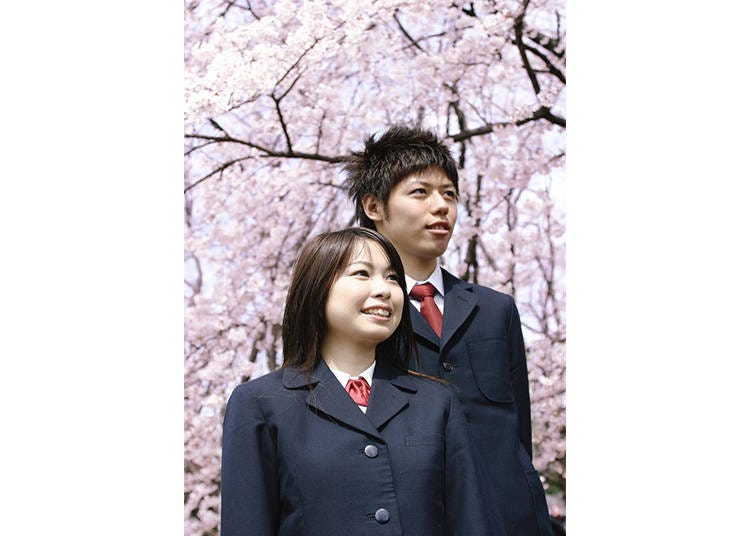
Some name the cherry blossom in their title and some don’t, but the trend definitely goes towards calling a springtime melody “sakura something-something.” One of Japan’s most famous songs is called “sakura sakura,” initially composed in the late Edo period as a practice song for the koto, a traditional string instrument. Its current lyrics were written in the Meiji period, which is also when the song has become so majorly popular that there’s not a single person in Japan who doesn’t know it.
Nowadays, various artists release such a sakura song every spring season. The top 5 best-selling J-Pop examples of such sakura songs are “Sakurazaka” by Masaharu Fukuyama; “Sakura no ki ni narou” (Let’s become a sakura tree) by AKB48; “Sakura” by Naotaru Moriyama; “Sakura” by Ketsumeishi; and “Sakura Drops” by Hikaru Utada. All of them are often sung or played at graduation parties or even when parting with a love interest. Even if you don’t understand the Japanese lyrics, we encourage you to give those songs a listen—can you feel your heartstrings being pulled at?
Q5 – Why Are So Many Things Called “Sakura” in Japanese When They Have Nothing to Do With Cherry Blossoms?

The Japanese language is filled with words and expressions featuring “sakura,” even if they seemingly have nothing to do with actual cherry blossoms. That is because the cherry blossom image is a very familiar one for Japanese people, so even things slightly resembling the flowers in one way or another are often named after the blossoms. For tourists, this may be especially confusing, as a lot of things really look nothing like the flowers at first glance! Let’s take a look at some of the most common words.
You’ll notice that a lot of the things introduced either boast a resemblance to the famous cherry blossoms in color, shape, or both – sometimes it may take a bit of imagination, but for the Japanese name givers, the resemblance is obvious!
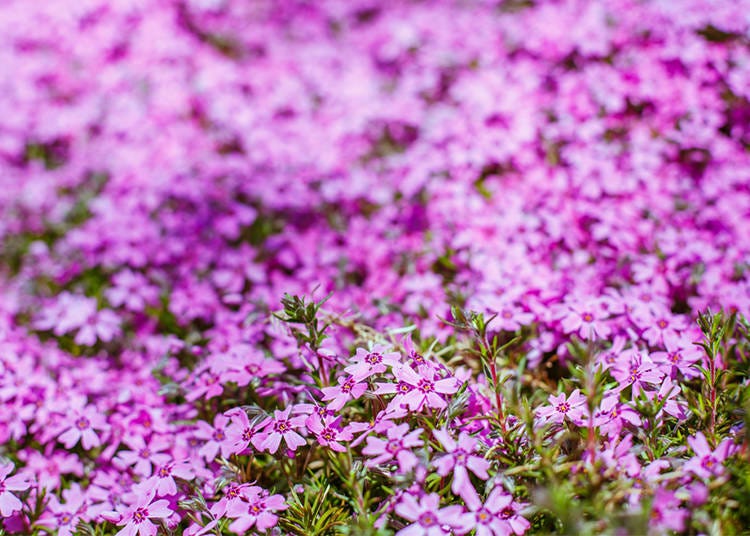
Shibazakura – Pink Moss Phlox
Also called “hanatsume kusa.” The shape of this flower resembles the cherry blossom and it blooms either in a vivid pink or light purple. It covers the ground densely, forming a floral carpet that is absolutely breathtaking.
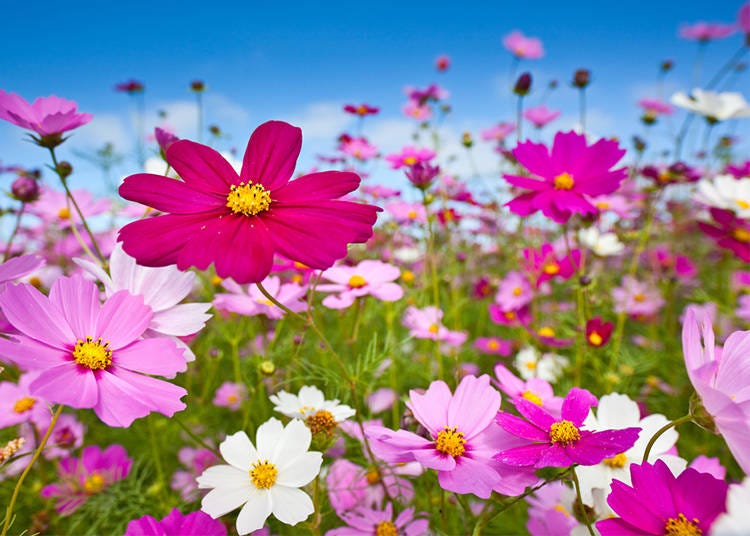
Akizakura – Cosmos Flowers
The Cosmos, a flower that blossoms in autumn. The kanji for “akizakura” can also be read as “kosumosu,” making the phrase a phonetic equivalent to the flower’s actual name. The spelling was made popular by the song “Kosumosu” by Momoe Yamaguchi in 1997.
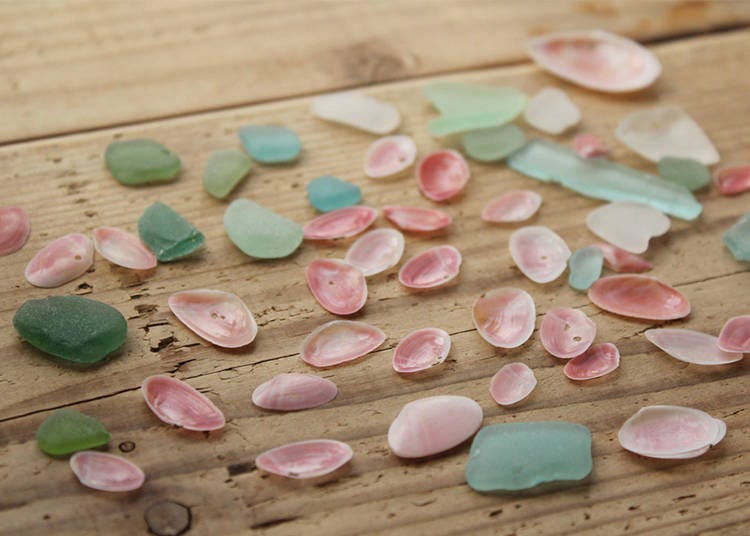
Sakuragai – A Type of Wedge Shell
These clams are named because of their pale pink color, making them look like cherry blossom petals.
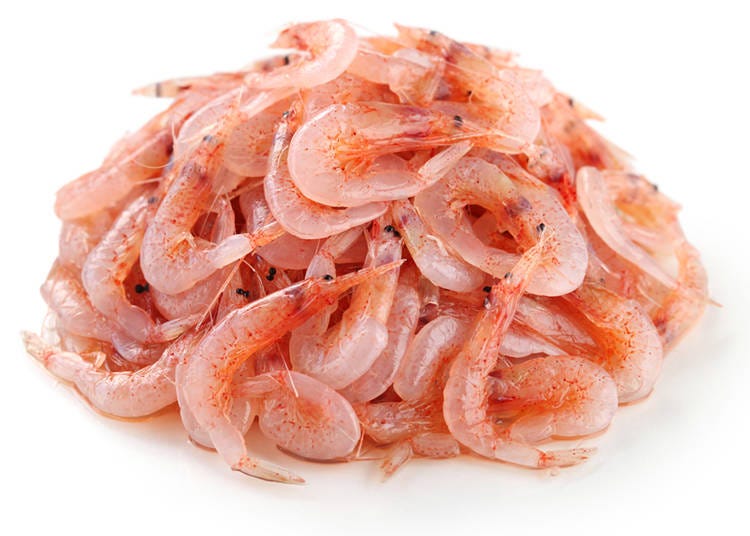
Sakuraebi – Sakura Shrimp
These little shrimps have a semi-translucent body that shines in a subtle pink, resembling the color of Japan’s famous cherry blossoms.

Sakuragayu – Red Bean Porridge
Sakuragayu is a porridge made with sweet red beans and rice. Traditionally, it is eaten during New Year’s, on January 15th to be precise, to purge and ward off evil and disaster.
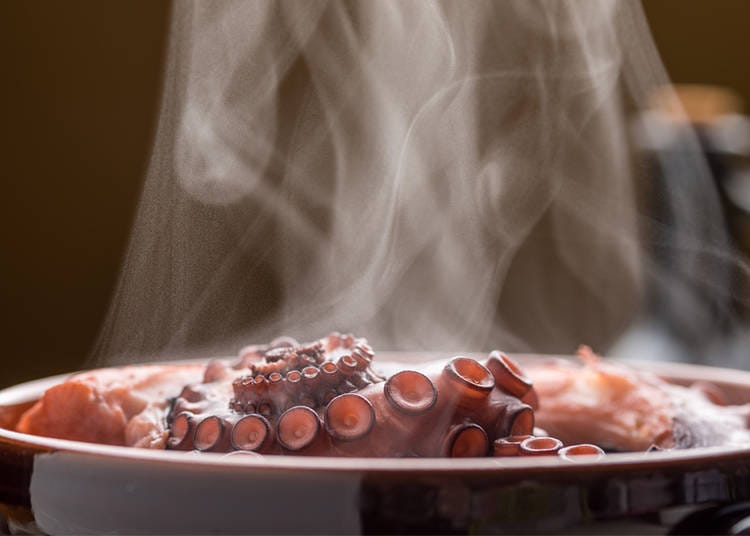
Sakurani – Cooked Octopus Legs
This is a dish of octopus legs being cooked until soft with sake, soy sauce, mirin, and sugar. The finished dish is of a pink color.
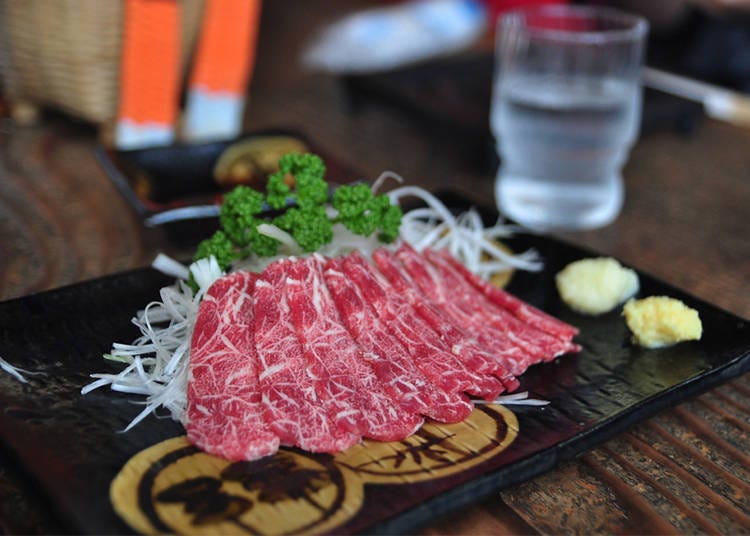
Sakuraniku & Sakuranabe – Horse Meat and Horse Hot Pot
This might be one of the weirdest sakura names. Sakuraniku describes horsemeat, while sakuranabe stands for a hot pot made with said horse meat. Incidentally, boar meat is called “peony meat,” while venison is also called “autumn leaf meat,” literally translated. There are various theories on how this name came to pass, with the most prominent one saying that these names were invented to conceal where the meat came from, as the consumption of game was forbidden during the Edo period.
Sakura, Spelled in Katakana – Fake Buyer, Hired Applauder
If “sakura” is spelled not in kanji characters (桜) but instead in katakana (サクラ), the syllabary used to spell words with a foreign origin, it can also refer to a fake buyer. That’s a person at, for example, a market stall, getting all excited about the wares to attract other customers. On TV, you’d also call someone hired to applaud or create excitement for a performer or act.
Cherry blossoms aren’t only a beautiful phenomenon in spring, but the culture and philosophy around them is a major part of Japanese daily life as well. From the image of the filigree flowers to their complex and bittersweet meaning, you’ll stumble across “sakura” a lot more than you might expect!
- Category
*Prices and options mentioned are subject to change.
*Unless stated otherwise, all prices include tax.
Popular Tours & Activitiess
Recommended places for you
-

ISHIDAYA Hanare
Yakiniku
Kobe, Sannomiya, Kitano
-

Jukuseiniku-to Namamottsuarera Nikubaru Italian Nikutaria Sannomiya
Izakaya
Kobe, Sannomiya, Kitano
-

Kambei Sannomiyahonten
Yakiniku
Kobe, Sannomiya, Kitano
-
Appealing

Rukku and Uohei
Izakaya
Sapporo / Chitose
-
Goods

Yoshida Gennojo-Roho Kyoto Buddhist Altars
Gift Shops
Nijo Castle, Kyoto Imperial Palace
-

Kanzenkoshitsuyakinikutabehodai Gyugyu Paradise Sannomiya
Yakiniku
Kobe, Sannomiya, Kitano
-
Ad

(Opening in Jan 2026) 'THE SUMO LIVE RESTAURANT HIRAKUZA GINZA TOKYO!' 5 Exciting Ways to Experience the World of Sumo!
-

First Japan Cherry Blossom 2026 Forecast Announced! Here's When & Where to See Sakura in Japan
-
Ad

Complete Guide to Ueno's National Museum of Nature and Science, the Perfect Place to Visit on Rainy Days or With Children
-

This Winter, Godzilla Takes Over Haneda Airport
by: Guest Contributor
-

New in Ginza! Air BicCamera Ginza Opens with a Faster, More Convenient Shopping Experience
by: Guest Contributor
-

Jujutsu Kaisen Takes Over JR East With a Wrapped Shinkansen This Winter
by: Guest Contributor
-

Tokyo Cherry Blossom Festival Season in Photos! (2019)
-

Tokyo Roppongi|Roppongi Station Area Map & Sightseeing Information
-

Sendai Umino-Mori Aquarium: Inside Northeast Japan's Largest Aqua Attraction
-

Tokyo St. Patrick's Day Weekend 2025 (March 15/16) - Asia's Largest Irish Event!
-

16 Secrets About Mt. Fuji, the Symbol of Japan: Even Japanese People Don’t Know That?!
-

10 Beautiful Places in Miyagi Prefecture to See the Cherry Blossoms in 2025
by: Alexander Litz
- #best sushi japan
- #what to do in odaiba
- #what to bring to japan
- #new years in tokyo
- #best ramen japan
- #what to buy in ameyoko
- #japanese nail trends
- #things to do japan
- #onsen tattoo friendly tokyo
- #daiso
- #best coffee japan
- #best japanese soft drinks
- #best yakiniku japan
- #japanese fashion culture
- #japanese convenience store snacks












